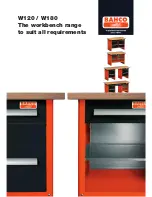
36 DAT 72/DDS-4 Product Manual
factor. These design features are also important contributors to the overall reliability,
durability and performance of the drive.
The mechanism is designed for minimum tape wear and prevention of damage to the
tape. The modes or operational states, such as stop, rewind and play, reduce
mechanism and tape wear. Fewer mechanical mode changes result in less wear on
key drive components. In some cases, the need for a mode change is circumvented
using the Pause mode, which stops the tape without activating the mechanism. All
mode selection is performed by the controller firmware. The host computer does not
directly control mode selection.
A custom timing tracking design, combined with the four-head cylinder design,
implements the specifics of the DAT 72 and DDS-4 recording format standards and
provides the precision required to perform seamless appends, or the ability to add
subsequent recorded data frames immediately adjacent to the last data frames
written on the tape.
A bank of jumpers is available at the rear of the drive. These jumpers allow you to
set the SCSI ID for the drive and to change configuration choices. Refer to Chapter 3
for information about setting these jumpers.
By using the jumpers, you can also enable terminator power if needed. (The default
for internal models is with terminator power disabled. For external drives, the default
is with terminator power enabled.)
Note: The DAT 72 and DDS-4 drives come with a terminator power fuse to provide
protection from component damage in case the SCSI cable is connected
incorrectly.
Three rectangular front-panel LEDs indicate a drive busy status and tape cartridge in
place status. When blinking, these LEDs also function as fault indicators. (Refer to
Chapter 4 for a summary of the function of these LEDs.) The external subsystem
also provides a round, green LED on the front panel to indicate that the power is on.
Helical Scan Recording—Four-Head Design
In helical scan recording, the heads are positioned opposite one another on a
cylinder, which is tilted approximately 6 degrees from the vertical plane and rotates
counterclockwise at 10,000 revolutions per minute (rpm). At the same time, the tape
moves slowly (20.375 mm per second in DDS-4 mode) in a horizontal path around
part of the cylinder. This simultaneous motion of cylinder and tape results in the head
traveling across the width of the tape in a helix-shaped motion.
The cylinder is designed with four, long-life heads—two read and two write heads.
These heads are set opposite one another with a rotation sequence of: write A, read
B, write B, read A (or write A new, read B old, write B new, read A old). The
advantage of this design is that a RAW check is performed immediately after the
data is written.
As mentioned earlier, the cylinder rotates rapidly (10,000 rpm) in the same direction
that the tape moves. The wrap angle of the tape on the cylinder is approximately 102
degrees. The combined movement of the tape and cylinder results in a relative head-
tape speed of 20.4 inches per second (ips).
Summary of Contents for STD1401LW
Page 1: ...DAT 72 and DDS 4 Tape Drives CD72LWH CD72LWE STD1401LW STD2401LW STD6401LW Product Manual...
Page 7: ...v Contents Simplified Decompression Operation 48...
Page 13: ...Introduction 5 Figure 3 External Drive...
Page 14: ...6 DAT 72 DDS 4 Product Manual...
Page 34: ...26 DAT 72 DDS 4 Product Manual...
Page 50: ...42 DAT 72 DDS 4 Product Manual...
Page 58: ......
















































